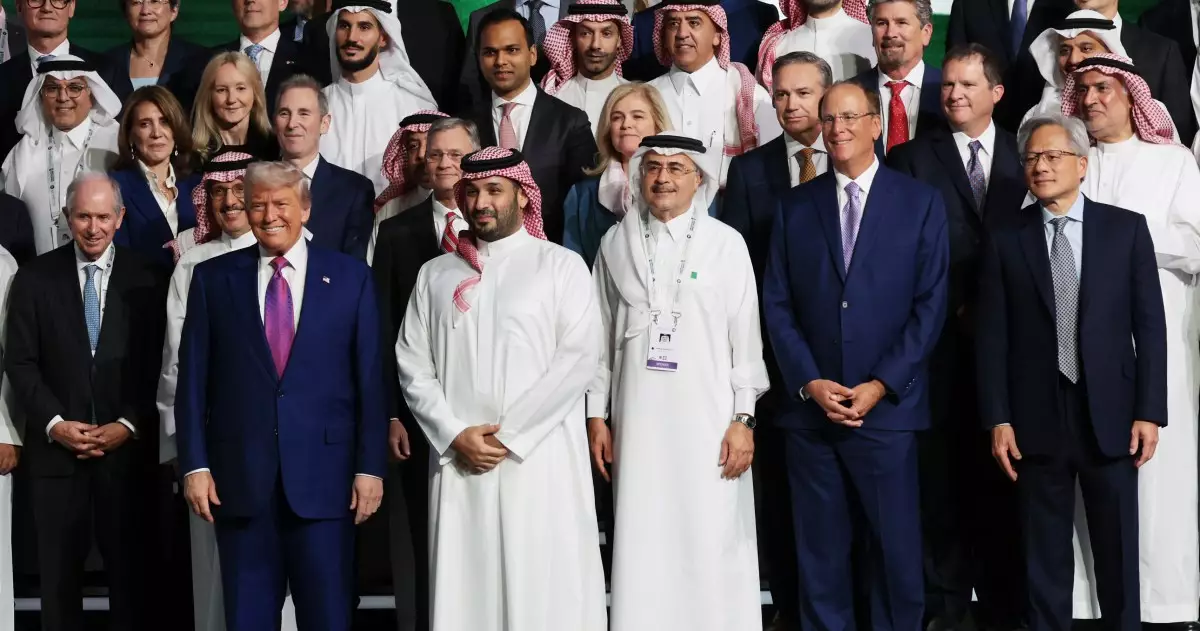In an ever-evolving landscape of technology, few companies have positioned themselves as dominant players quite like Nvidia in the realm of artificial intelligence (AI) chips. Recent policy shifts, particularly in the United States, have greatly influenced this trajectory, enabling Nvidia to bolster its already formidable stance in the global market. With the US Department of Commerce’s recent decision to lift export limits on American-made AI chips, Nvidia is wholeheartedly leveraging this opportunity. This policy reversal not only eliminates significant barriers but also creates a fertile ground for American innovation to flourish.
The shifts in policy seem to coincide harmoniously with Nvidia CEO Jensen Huang’s efforts to foster relations with the current administration. Huang’s presence alongside President Trump in Saudi Arabia underscores a strategic approach aimed not just at securing investments for US firms, but at maintaining a competitive advantage in the international tech arena. Here, the subtle merging of politics and technology illustrates how corporate strategies are increasingly intertwined with governmental movements, as tech leaders position themselves in accordance with political tides.
Strategic Removal of Barriers
The rescinding of the Artificial Intelligence Diffusion Rule has been both a relief and an opportunity for Nvidia. Originally intended to impose restrictions on the sale of AI chips internationally without government approval, this policy could have hindered Nvidia’s staggering 90 percent share in the AI chip market. Rather than enhancing national security as intended, it threatened to stifle American innovation. The Department of Commerce’s acknowledgment of this potentially disastrous outcome reflects a growing awareness of the necessity for flexibility in a fast-paced digital environment.
The DOC declared that such restrictive measures would have not only burdened American firms with excessive regulatory hurdles but also risked degrading diplomatic relations globally. By downgrading countries to second-tier status, the policy would have inadvertently fueled competition with China, facilitating the very advancements the restrictions aimed to curtail. In essence, the attempted prevention of countries like Russia and China from accessing or developing AI capabilities could have backfired, ultimately jeopardizing America’s lead in a field dominated by relentless competition.
Eliminating External Threats
As the US government shifts the regulatory landscape, another external threat looms—Huawei’s own advancements in AI chip technology. According to US officials, there is a strong warning against utilizing Huawei’s home-grown Ascend processors globally, solidifying the competitive landscape as one that reflects not just market dynamics but geopolitical realities. In this context, Nvidia’s rise is directly aligned with national interests, showcasing how the tech sector increasingly becomes a battleground for dominance on multiple fronts.
Huang’s critical involvement with the Trump administration hints at a broader strategy: fostering alliances not only with government entities but also with other industry giants. The gathering of prominent tech leaders, including Elon Musk and AMD’s Lisa Su, at the recent investment summit in Riyadh, points to the unification of powerful voices in technology seeking to coalesce around shared interests. Their cooperative engagement potentially acts as a bulwark against alternative developments threatening the foundational core of America’s tech superiority.
The Fabric of Future Relationships
The relationship dynamics at play present a fascinating lens through which to view the intersection of business, government, and international relations. Huang’s earlier absence from Trump’s inauguration raises questions about the evolving nature of these ties, yet nothing appears to symbolize an adversarial relationship. Instead, the collaborative endeavors signify a culture of pragmatism where business leaders adapt to the political climate to safeguard and promote their corporate interests.
As these changes unfold, the narrative centering on Nvidia and its position will shape not only market strategies but also the very essence of innovation in the AI sector. The concerted focus on removing obstacles and rallying top talent illustrates an imperative for unity among tech leaders in the US as they navigate a rapidly changing global environment. The strategic maneuvering we witness today is more than mere opportunism; it signals a sharper realization that the future of AI might well depend on an uninterrupted flow of ideas, technologies, and collaborations transcending both national and international boundaries.

